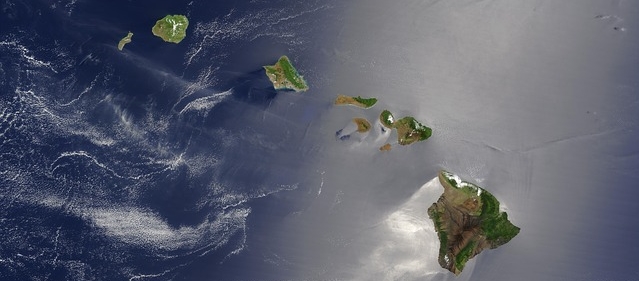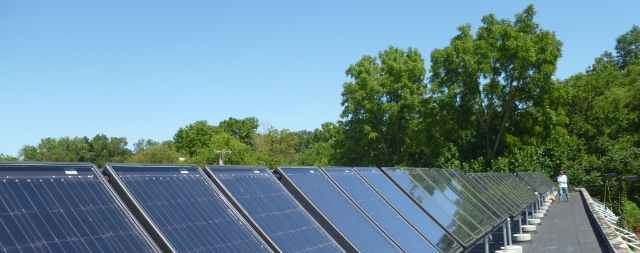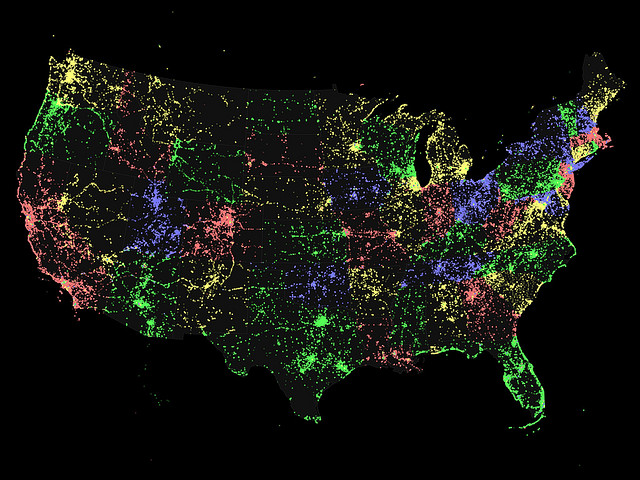In 2014, state public utility commissions grappled with issues ranging from grid modernization to energy efficiency rollbacks, with some of the proceedings continuing into next year. In this year-end post, we look back at the top 10 issues on commission dockets this year - and get ready for a busy 2015. Note: some links in this post reference documents in DocketDash, BillBoard or PowerPortal, applications in AEE's new energy policy software platform, PowerSuite. Click here and sign up for a free 14-day trial of PowerSuite.

-
New York Boldly Undertakes Comprehensive Utility Reform
The New York Public Service Commission opened a groundbreaking proceeding, Reforming the Energy Vision (REV) in April 2014, which aims to address key barriers to the deployment of distributed energy resources through a significant redesign of utility planning processes, electricity market structures, and rate design. The rest of the country is watching closely, as the outcome of REV could help define the future of utility business models in many states.
AEE and its state and regional partners, Alliance for Clean Energy New York and the New England Clean Energy Council, have filed formal comments in the REV proceeding and, via the AEE Institute, published a report outlining a comprehensive approach to benefit-cost analysis for distributed energy resources needed to make REV successful.

-
Massachusetts Blazes a Trail in Grid Modernization
Back in 2012, the Massachusetts Department of Public Utilities opened their own investigation into a modernization of the electric grid. In June, the DPU issued an order that requires each electric distribution company to submit a 10-year grid modernization plan, which must also include a five-year short-term plan that outlines their capital investments, including the rollout of advanced metering functionality across the state. This summer, the DPU also issued concurrent investigations into time varying rates and electric vehicles and electric vehicle charging infrastructure.

-
Hawaii Regulators Set an Ambitious Vision for the Island’s Future
Isolated from the mainland power grid and saddled with the highest electricity prices in the U.S., Hawaii has long been at the forefront of adding renewables to their mix. In April, the PUC, on the heels of their recent white paper on the future of Hawaii’s electric utilities, announced four major decisions requiring HECO companies (recently bought by Florida-based NextEra Energy) to make substantial changes to PV interconnection standards, demand response plans, renewable integration, and cost reduction strategies. In August, the PUC received HECO’s improvement action plan, which would triple the amount of distributed solar, and generate more than 65 percent of electricity from renewable energy sources by 2030. The plan also included substantial new fixed rates (see #5, below).

-
Wholesale Demand Response Market Suffers Judicial Blow
A huge challenge to the demand response industry came when the US Court of Appeals in May vacated FERC Order 745 - an order that requires wholesale energy markets to pay demand response providers market prices for the energy they save. The court reasoned that demand response is part of the retail market, not the wholesale market, and therefore is outside of FERC’s authority to regulate. The Obama Administration is appealing the decision to the Supreme Court.

-
Fixed Charges on the Rise
Several utilities this year across the country - from Hawaii to Wisconsin - have argued that higher fixed charges are needed to cover the costs of maintaining the grid as consumption drops due to rooftop solar and energy efficiency gains. Critics of the proposals argued that this new rate structure will stymie distributed generation, reduce the savings from energy efficiency investments, and disproportionately affect low-income customers.

-
California Makes Moves Toward a 21st Century Electricity System
California has several major open dockets covering key elements of what might become an integrated energy policy for a 21st century electricity system. In October, the CPUC issued an order that established rolling energy efficiency portfolios, which should allow for greater funding certainty and program stability. In November, Commissioner Peterman issued a proposed decision that expanded the potential role of utility ownership in electric vehicle charging infrastructure. Other developments include organizing future demand response programs, developing new distribution resource plans to encourage the adoption of distributed energy resources and reaching state energy policy goals, and ordering the utilities to issue the first round of energy storage solicitations to meet the state’s goal of 1.3 GW of storage by 2022.

-
Utilities Consider Alternatives to Net Metering and Try to Get in the Rooftop Solar Game
In 2014, Minnesota became the first state to develop a formula for calculating the value of customer-generated solar power, although they have yet to apply the tariff in practice. Their methodology gives IOUs the option of using the tariff instead of the retail electricity rate (under net metering) when crediting customers for excess electricity generated from solar panels.
Three months ago, the two largest investor-owned electric utilities in Arizona submitted proposals to the Arizona Corporation Commission that sparked a controversy over whether monopoly utilities should be allowed to own rooftop solar. Similarly, CPS Energy in San Antonio is trying to make a distributed solar play by proposing that third-party installers bid into the wholesale market for power purchase agreements with the utility.

-
Energy Efficiency Comes Under Attack
Attacks on energy efficiency have been on the rise in 2014. By failing to veto a controversial bill, Indiana Gov. Mike Pence essentially shut down the Energizing Indiana Program. The Ohio State Legislature passed SB 310, freezing the state's energy efficiency standards and causing First Energy, which serves over one third of all customers in Ohio, to end most of its energy efficiency programs. The Florida PSC just approved historic cuts to the energy efficiency programs of Florida Power & Light Company, Tampa Electric Company, Duke Energy Florida, and Gulf Power. Staff at the Arizona Corporation Commission also recently proposed to gut their energy efficiency requirements.

-
States React to EPA’s New Carbon Regulations
In June, the EPA issued the Clean Power Plan, a proposed rule that sets a carbon emission rate for each state to meet by 2030. The Florida Public Service Commission, Virginia State Corporation Commission, Iowa Utilities Board, and Ohio’s Public Utilities Commission among others, have submitted formal comments to the EPA regarding compliance with the plan.
AEE and its state partners around the country have submitted comments in support of the Plan as a historic opportunity to modernize the electric power system.

-
Reliability Takes Center Stage
And finally, Superstorm Sandy, the Polar Vortex, the Derecho and even the most recent Nor’easter have made investments in reliability and resiliency a priority across the nation. Duke Energy Indiana recently filed a $1.85 billion plan with the Indiana Utility Regulatory Commission that aims to modernize its grid and reduce outages, improve reliability, and increase the amount of information that customers receive from the utility. The NJ BPU approved $1.22 billion for PSE&G’s “Energy Strong” plan to improve the durability and stability of the company’s distribution infrastructure, and make it better able to withstand severe weather events. Central Hudson in New York has also proposed to own microgrids as part of a $46 million plan to increase grid resiliency.
Want to track all the most important regulatory updates? Check out PowerSuite, your guide to energy policy and regulatory affairs.

